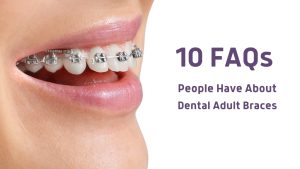A Biased View of Legacy Orthodontics
A Biased View of Legacy Orthodontics
Blog Article
Legacy Orthodontics Things To Know Before You Get This
Table of ContentsExcitement About Legacy OrthodonticsThe Of Legacy OrthodonticsThe Only Guide to Legacy OrthodonticsIndicators on Legacy Orthodontics You Should KnowSome Known Details About Legacy Orthodontics
In addition, we supply adjustable therapy routines, flexible repayment choices and an enjoyable, enjoyable experience.An orthodontist is a dentist educated to identify, stop, and treat teeth and jaw abnormalities. Orthodontists function with individuals of all ages, from children to adults.
Malocclusion, or misaligned teeth, can cause dental concerns, consisting of dental cavity, periodontal condition, and hard or painful eating. Not every person is born with straight teeth. If you have a bad bite or large areas between your teeth, you might intend to get in touch with a dental practitioner concentrating on orthodontic care.
Little Known Facts About Legacy Orthodontics.
( Picture Credit History: DigitalVision/Getty Images) Orthodontists make use of repaired and removable oral devices, like braces, retainers, and bands, to alter the setting of teeth in your mouth. Orthodontic treatment is for dental problems, consisting of: Crooked teethBite issues, like an overbite or an underbiteCrowded teeth or teeth that are too much apartJaw misalignmentThe goal of orthodontic therapy is to boost your bite.
A healthy and balanced bite guarantees you can eat, eat, and speak properly. While you could consider orthodontists as mainly for children or young adults that need braces, they can remedy dental troubles at any kind of age. Orthodontists go to university, oral college, and orthodontic institution. After graduation, they invest 2 or 3 years in an orthodontic residency program.
All orthodontists are dental experts, but not all dentists are orthodontists. Orthodontic residency programs supply extensive, concentrated direction for oral specialists. They concentrate on two areas: Just how to correctly and securely relocate teeth Just how to correctly lead advancement in the teeth, jaw, and faceOnce an orthodontist has actually completed training, they have the option to end up being board licensed.
The Buzz on Legacy Orthodontics
Malocclusion leads to tooth overcrowding, an irregular jaw, or uneven bite patterns. Malocclusion is usually treated with: Your orthodontist affixes metal, ceramic, or plastic square bonds to your teeth.
If you have just small malocclusion, you may have the ability to utilize clear braces, called aligners, instead of traditional dental braces (https://www.artstation.com/legacyortho8/profile). Some individuals require a headgear to aid relocate teeth right into line with pressure from outside the mouth. After dental braces or aligners, you'll need to put on a retainer. A retainer is a personalized device that keeps your teeth in location.
They're frequently used on children. They can produce added room in the mouth without having to pull teeth. If you have a significant underbite or overbite, you might require orthognathic surgical treatment (likewise called orthodontic surgery) to extend or shorten your jaw. Orthodontists make use of cables, medical screws, or plates to sustain your jaw bone.
You might require to see an orthodontist if you have: Crowding or not enough space for every one of your teethOverbite, when your upper teeth come your base teethUnderbite, when your bottom teeth are as well much forwardSpacing or concerns with gapsCrossbite, which is when your top teeth fit behind your bottom teeth when your mouth is closedOpen bite read the full info here or a vertical space between your front base and upper teethMisplaced midline, when the facility of your base and upper teeth don't align Fixing a dental malocclusion can: Make biting, eating, and speaking easierImprove the balance of our face and your general appearanceEase discomfort from temporomandibular joint conditionsSeparate your teeth and make them simpler to clean, helping avoid dental cavity or cavities It's often a dental professional that initially notifications misaligned teeth throughout a regular test.
The 7-Minute Rule for Legacy Orthodontics

Throughout your very first orthodontic examination, you'll likely have: An oral examPhotos taken of your face and smileDental X-raysPanoramic (360 degree) X-rays of your face and headImpressions to create molds of your teethThese examinations will certainly help your orthodontist recognize just how to wage your treatment. leesburg orthodontist. An orthodontist is a dentist that's had training to treat your teeth and jaw
Orthodontists may do surgical procedure, exams,X-rays,and more to aid you attain an extra comfortable, healthier smile. An orthodontist is concentrated on your bite, so something like a cracked tooth would be managed by a dental practitioner. Orthodontists are dental practitioners however not all dental experts are orthodontists. Orthodontists are focused on your bite, or the way your teeth meshed, and the straightness of your teeth.
Ever wondered how celebrities always seem to have completely lined up teeth? Orthodontists are dental specialists that focus on remedying abnormalities in the teeth and jaws.
The Only Guide to Legacy Orthodontics

While braces are one of the most commonly acknowledged orthodontic therapy, orthodontists have a diverse toolkit at their disposal. The certain strategy picked depends on the seriousness of the situation, the person's age, and private preferences. These tried-and-true dental braces use a system of brackets adhered to the teeth and connected by cords.
Clear aligners, like Invisalign, are a popular choice for patients looking for a more discreet treatment option. These removable trays are tailor-made to progressively change the teeth's placement. Headgear may be used along with dental braces or aligners to use additional targeted pressures, specifically for dealing with jaw disparities. In instances of narrow jaws, palatal expanders can be used to create room for proper tooth placement.
Report this page